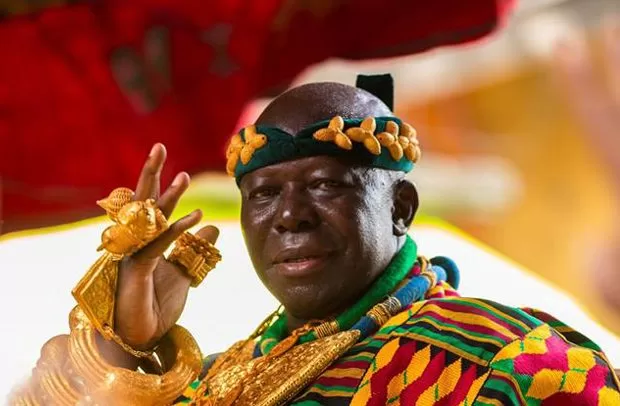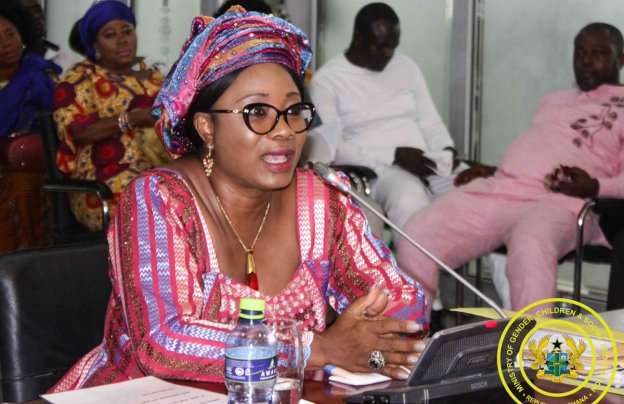 The World Bank has projected a 6.7 percent economic growth for the country in 2019, as it projects oil production to dissipate.
“Growth in Ghana is forecast to moderate from 6.9 percent in 2018 to 6.7 percent in 2019 as the effects of high oil production dissipate,” The World Bank said in its latest report this week.
In 2017 the country’s economy grew by 8.5 percent as against a 6.3 percent target, largely anchored on an increase in oil production volumes.
In monetary terms the country’s economy (including oil), when adjusted to inflation, grew by some GH₵56.3billion compared to Q4 of 2016 when it grew by GH₵47.3billion.
Government has set a target of 6.8 percent growth in overall GDP, and a non-oil GDP growth rate of 5.4 percent for year-end 2018.
A new report by the Public Interest Accountability Committee (PIAC) has shown that total petroleum receipts since the beginning of commercial oil production up to 2017 has hit US$4billion, realised from the sale of more than 253 million barrels of crude oil.
In 2016, Ghana recorded its lowest revenue from oil production as only US$247million was realised, compared to the highest ever recorded in 2014 at US$978 million. Price fluctuations on the global crude oil market largely caused the poor oil revenue income in 2016.
The World Bank has also predicted that Africa’s economy will grow by an average 3.1 percent in 2018, owing to stability in oil and metal prices, and expansion in global trade among others.
“Growth in the region is projected to pick up to 3.1 percent in 2018, and to firm to 3.5 percent in 2019 and 3.7 percent in 2020. These forecasts are predicted on the expectations that oil and metals prices will remain stable, expansion in global trade will stay robust, and external financial market conditions will continue to be supportive,” the Bank said in its Volume 17 2018 edition of Africa’s Pulse report.
The World Bank has projected a 6.7 percent economic growth for the country in 2019, as it projects oil production to dissipate.
“Growth in Ghana is forecast to moderate from 6.9 percent in 2018 to 6.7 percent in 2019 as the effects of high oil production dissipate,” The World Bank said in its latest report this week.
In 2017 the country’s economy grew by 8.5 percent as against a 6.3 percent target, largely anchored on an increase in oil production volumes.
In monetary terms the country’s economy (including oil), when adjusted to inflation, grew by some GH₵56.3billion compared to Q4 of 2016 when it grew by GH₵47.3billion.
Government has set a target of 6.8 percent growth in overall GDP, and a non-oil GDP growth rate of 5.4 percent for year-end 2018.
A new report by the Public Interest Accountability Committee (PIAC) has shown that total petroleum receipts since the beginning of commercial oil production up to 2017 has hit US$4billion, realised from the sale of more than 253 million barrels of crude oil.
In 2016, Ghana recorded its lowest revenue from oil production as only US$247million was realised, compared to the highest ever recorded in 2014 at US$978 million. Price fluctuations on the global crude oil market largely caused the poor oil revenue income in 2016.
The World Bank has also predicted that Africa’s economy will grow by an average 3.1 percent in 2018, owing to stability in oil and metal prices, and expansion in global trade among others.
“Growth in the region is projected to pick up to 3.1 percent in 2018, and to firm to 3.5 percent in 2019 and 3.7 percent in 2020. These forecasts are predicted on the expectations that oil and metals prices will remain stable, expansion in global trade will stay robust, and external financial market conditions will continue to be supportive,” the Bank said in its Volume 17 2018 edition of Africa’s Pulse report. The Bank further noted that per capita GDP remains below the long-term average for developing economies, hence proactive measures need to be taken by governments to improve it.
“Although per capita income in the region will turn positive, it remains below the long-term average and below the average for emerging market and developing economies, highlighting the need for actions to boost potential growth. Sustained acceleration in per capita income growth is necessary for progress in poverty reduction in the region,” the report states.
Ghana’s per capita GDP has, however, reached a four-year high of US$1,632 or GH₵7,110 at the end of 2017.
The figure is an 8.2 percent increase over the US$1,508 recorded in 2016 and higher than the World Bank’s position that per capita growth rates – if they continue along historical lines – will be between 1.7 and 2.5 percent over the next two to three decades.
Government has said it wants to double per capita GDP in the next six years – but the Bretton Woods institution has said in a soon-to-be-adopted strategy for Ghana that the goal is unrealistic, since it would require per capita growth rates of around 9 percent.
After reaching US$1,841 in 2013, GDP Per Capita dropped by 22.4 percent in 2014 to US$1,428 and tumbled further by 8 percent in 2015 to US$1,311 before inching up by 15 percent in 2016.
Source: B&FT | Ghana]]>
The Bank further noted that per capita GDP remains below the long-term average for developing economies, hence proactive measures need to be taken by governments to improve it.
“Although per capita income in the region will turn positive, it remains below the long-term average and below the average for emerging market and developing economies, highlighting the need for actions to boost potential growth. Sustained acceleration in per capita income growth is necessary for progress in poverty reduction in the region,” the report states.
Ghana’s per capita GDP has, however, reached a four-year high of US$1,632 or GH₵7,110 at the end of 2017.
The figure is an 8.2 percent increase over the US$1,508 recorded in 2016 and higher than the World Bank’s position that per capita growth rates – if they continue along historical lines – will be between 1.7 and 2.5 percent over the next two to three decades.
Government has said it wants to double per capita GDP in the next six years – but the Bretton Woods institution has said in a soon-to-be-adopted strategy for Ghana that the goal is unrealistic, since it would require per capita growth rates of around 9 percent.
After reaching US$1,841 in 2013, GDP Per Capita dropped by 22.4 percent in 2014 to US$1,428 and tumbled further by 8 percent in 2015 to US$1,311 before inching up by 15 percent in 2016.
Source: B&FT | Ghana]]>
World Bank predicts 6.7% growth in 2019
Reading Time: 3 mins read
Recent Posts
- NPP sacks MP for Agona West Cynthia Morrison, 279 others from party
- The ECOWAS Bank for Investment and Development wins the Africa Sustainability Award
- Ghanaian sports journalist Naa Shika Stargurl shines on global stage
- Central Regional Minister to go to Court over her dismissal from NPP?
- NPP accuses NDC of lawlessness, demands urgent re-collation by EC in disputed constituencies
- Anytime there’s vigilance, NDC wins – Malik Basintale
- Akufo-Addo statue in Takoradi suffers partial damage amid controversy
- Current financial year proving challenging for COCOBOD – IMF
Popular Stories
-
Agona West NPP expels Regional Minister, 282 others for anti-party activities
-
Central Regional Minister to go to Court over her dismissal from NPP?
-
NPP sacks MP for Agona West Cynthia Morrison, 279 others from party
-
Ghanaian sports journalist Naa Shika Stargurl shines on global stage
-
Akufo-Addo statue in Takoradi suffers partial damage amid controversy

ABOUT US
Newstitbits.com is a 21st Century journalism providing the needed independent, credible, fair and reliable alternative in comprehensive news delivering that promotes knowledge, political stability and economic prosperity.
Contact us: [email protected]
@2023 – Newstitbits.com. All Rights Reserved.















